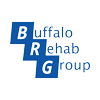Improving Joint Health to Combat Aging
Unfortunately, we can’t change the number of candles on our cake each year, but we can change how our body feels as we age.
As we get older, it’s normal to have wear and tear on our joints, but not doing the things we love to do isn’t part of the norm.
Osteoarthritis: Wear and Tear on Joints
The wear and tear process contributes to degenerative changes in our joints, known as osteoarthritis (OA).
Osteoarthritis is a process that wears away the cartilage (or cushion) of a joint. The thinning of this “cushion” exposes bone, which is why you’ve likely heard someone say that their knee is “bone on bone.”
The wearing of our joints is often thought of as an inevitable aging process; however, if age is to blame, wouldn’t everyone have arthritis? Why is arthritis worse in certain joints compared to others? How are individuals in their 70s or older not experiencing arthritis in their joints, while some in their 30s and 40s are?
While OA can affect any joint in the body, the knee, hip, and lower back are the most commonly targeted. In fact, knee OA affects nearly one in two women and one in three men (1).
The Effect of Tight or Weak Muscles on Joints
Tight or weak muscles will cause your joints to deviate from ideal movement patterns. These deviations cause extra stress and may speed up degenerative changes. Surprisingly, the gluteal (buttock) muscles provide major support for the knee, low back, and hip.
A study by Hinman et al. found that people who suffer from knee OA demonstrated significant unilateral gluteal muscle weakness (4).
Weakness in those outer hip muscles will impair the hips, knees, and your low back’s ability to react to force — potentially leading to injury or worsening OA.
The hamstrings, quadriceps, and calf muscles also provide support around these joints.
Slow down the aging process and wear and tear on your joints by increasing your glute strength.
Combat Aging Joints With a Side or Lateral Lunge
A side or lateral lunge is great for building glute strength. Strong glutes support proper mobility and relieve wear and tear on our joints!
Start by standing with your feet together and your hands at your sides or on your hips.
Step your right foot to the side. As you step, bend your knee and push your hips back, making sure not to let your knee extend beyond your toe.
Return to your starting position.
Complete two to three sets of ten repetitions, per side.
References
- Dillon, Charles F., et al. “Prevalence of Knee Osteoarthritis in the United States: Arthritis Data from the Third National Health and Nutrition Examination Survey 1991-94.” The Journal of Rheumatology 33.11 (2006): 2271-2279.
- Bhatia, Dinesh, Tatiana Bejarano, and Mario Novo. “Current Interventions in the Management of Knee Osteoarthritis.” Journal of Pharmacy & Bioallied Sciences 5.1 (2013): 30.
- Barenius, Björn, et al. “Increased Risk of Osteoarthritis After Anterior Cruciate Ligament Reconstruction a 14-year Follow-up Study of a Randomized Controlled Trial.” The American Journal of Sports Medicine 42.5 (2014): 1049-1057.
- Hinman, Rana S., et al. “Hip Muscle Weakness in Individuals with Medial Knee Osteoarthritis.” Arthritis Care & Research 62.8 (2010): 1190-1193.
Want help feeling and moving your best?
Treatment is covered by insurance, no referral is required to start, and with flexible in-clinic and virtual appointments available, you can find a time that works with your schedule.
Call 716-458-1990 or click here to schedule online:
